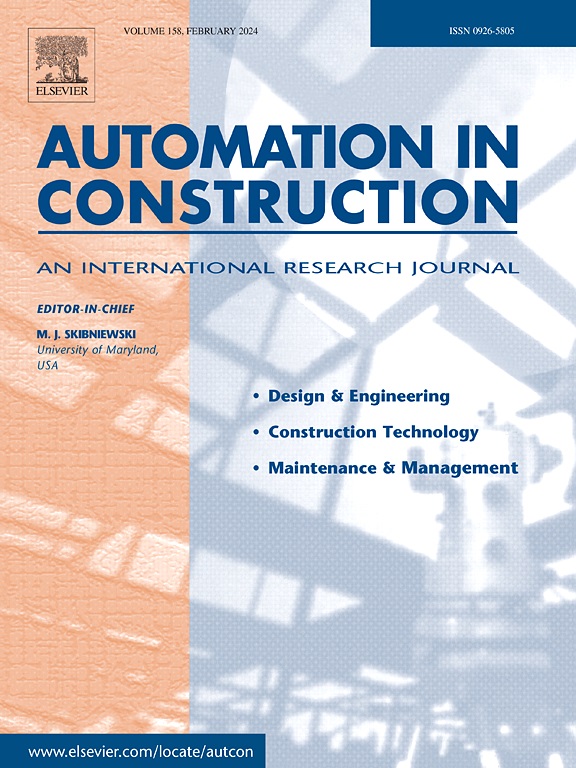Text-to-structure interpretation of user requests in BIM interaction
IF 11.5
1区 工程技术
Q1 CONSTRUCTION & BUILDING TECHNOLOGY
引用次数: 0
Abstract
Numerous efforts have been devoted to utilizing a natural language-based interface for BIM interaction. These interfaces require extracting user's intent (i.e., the operation type) and slots (i.e., the targeted elements and properties). However, there is a lack of a fine-grained approach for extracting intent and slot information simultaneously. This paper introduces a text-to-structure approach based on language models to interpret user requests for BIM interaction (T2S4BIM). It proposed a synthetic data generation method and a curated dataset as data support. Employing Transformer-based models, T2S4BIM converts unstructured user requests into a structured format with intent and slot information. Experiments demonstrated that T2S4BIM outperformed existing approaches, with encoder-decoder models like T5 and FLAN-T5 achieving performance comparable to larger, decoder-only models such as Llama3.1-8B and Qwen2.5-7B, while improving efficiency. The practical applicability of T2S4BIM was illustrated through a Revit plug-in that interprets user requests and executes corresponding actions (e.g., manipulating object properties).
BIM交互中用户请求的文本到结构解释
许多努力都致力于利用基于自然语言的BIM交互界面。这些接口需要提取用户的意图(即操作类型)和槽(即目标元素和属性)。然而,缺乏同时提取意图和槽信息的细粒度方法。本文介绍了一种基于语言模型的文本到结构方法来解释用户对BIM交互的请求(T2S4BIM)。提出了一种综合数据生成方法和一种精选数据集作为数据支持。T2S4BIM采用基于transformer的模型,将非结构化的用户请求转换为具有意图和槽信息的结构化格式。实验表明,T2S4BIM优于现有方法,T5和FLAN-T5等编解码器模型的性能可与Llama3.1-8B和Qwen2.5-7B等更大的纯解码器模型相媲美,同时提高了效率。通过Revit插件说明T2S4BIM的实际适用性,该插件解释用户请求并执行相应的操作(例如,操作对象属性)。
本文章由计算机程序翻译,如有差异,请以英文原文为准。
求助全文
约1分钟内获得全文
求助全文
来源期刊

Automation in Construction
工程技术-工程:土木
CiteScore
19.20
自引率
16.50%
发文量
563
审稿时长
8.5 months
期刊介绍:
Automation in Construction is an international journal that focuses on publishing original research papers related to the use of Information Technologies in various aspects of the construction industry. The journal covers topics such as design, engineering, construction technologies, and the maintenance and management of constructed facilities.
The scope of Automation in Construction is extensive and covers all stages of the construction life cycle. This includes initial planning and design, construction of the facility, operation and maintenance, as well as the eventual dismantling and recycling of buildings and engineering structures.
 求助内容:
求助内容: 应助结果提醒方式:
应助结果提醒方式:


